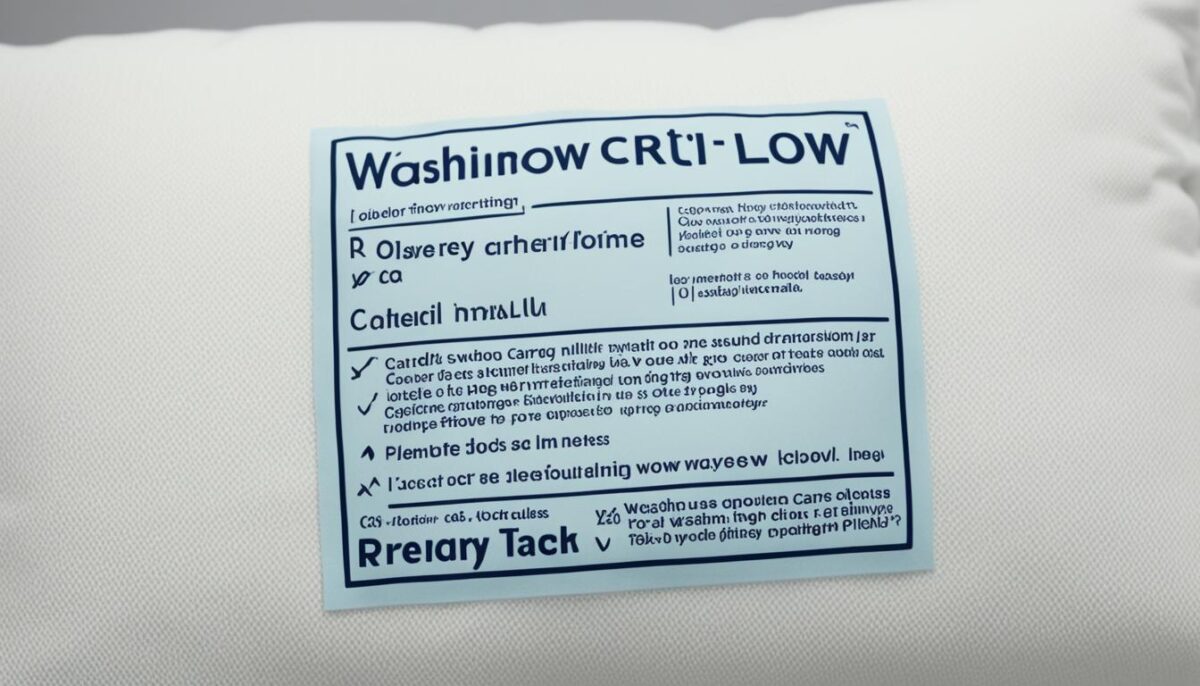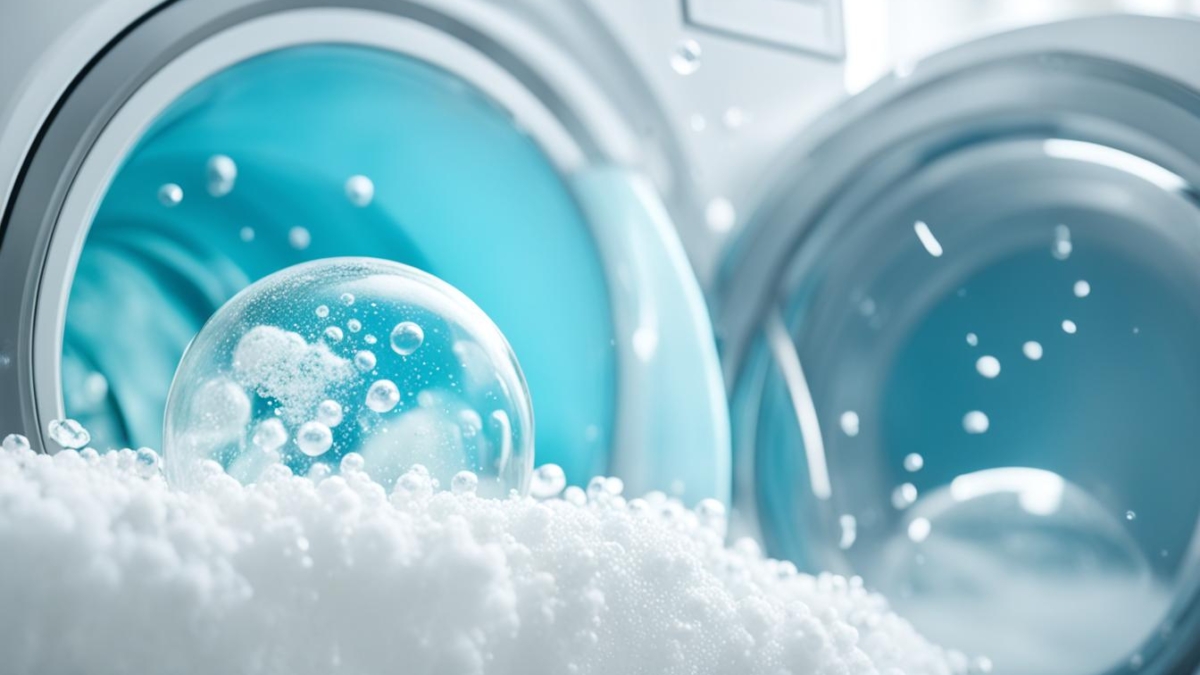Welcome to our guide on how to wash couch pillows! If you’re looking for tips and tricks to achieve a cleaner home and fresher living space, you’ve come to the right place. Couch pillows are often prone to spills, stains, and odors, but with the proper washing techniques, you can easily restore them to their former glory.
In this section, we will provide you with detailed instructions and expert advice on effectively washing your couch pillows. From understanding care labels to preparing the pillows for washing, we’ll cover every step of the process. Prepare to say goodbye to dirt, dust, and allergens, and hello to a cleaner, comfier home.
But before we dive into the nitty-gritty of pillow washing, take a moment to check out the image below. It showcases the before and after transformation of a couch pillow, giving you a glimpse of what you can achieve with our tips.
Now, let’s get started and learn how to wash your couch pillows like a pro!
Understanding Pillow Care Labels
Before you begin washing your couch pillows, it’s crucial to understand the care labels attached to them. These labels provide important washing instructions and indicate the fabric type of your pillows.
By familiarizing yourself with these care labels, you can ensure that you follow the appropriate washing method for your specific pillows. This will help prevent any damage to the fabric and maintain the quality and longevity of your pillows.
Pillow Care Label Meanings
Pillow care labels may include symbols or written instructions that convey important information about the washing process. Here are some common care label symbols and their meanings:
- Machine Wash: This symbol indicates whether the pillow can be safely washed in a washing machine. If the symbol includes a number, it suggests the recommended water temperature for washing.
- Hand Wash: This symbol signifies that the pillow should be washed by hand rather than in a machine. Hand washing is often recommended for delicate fabrics or pillows with intricate designs.
- Dry Clean: If you see this symbol, it means that the pillow should be taken to a professional dry cleaner for cleaning. Dry cleaning is typically suitable for pillows with fabrics that may shrink or get damaged when washed with water.
- Do Not Wash: This symbol indicates that the pillow should not be washed at all. Instead, spot cleaning or professional cleaning methods may be required.
It’s essential to carefully read and follow the instructions provided by the care labels to ensure that your pillows are cleaned correctly without any adverse effects on the fabric.

Understanding pillow care labels allows you to make informed decisions about washing your couch pillows. In the next section, we’ll guide you on how to properly prepare your pillows for washing, ensuring the best possible results.
Preparing the Pillows for Washing
Properly preparing your couch pillows before washing is crucial for achieving optimal results. By following these steps, you’ll ensure that your pillows are clean and fresh once the washing process is complete.
Removing Pillow Covers
To begin, carefully remove the covers from your couch pillows. Check the care labels attached to the covers for specific instructions on how to remove them without causing any damage. If the covers are machine washable, you can include them in the washing process. Otherwise, set them aside for separate cleaning treatments.
Once the covers are removed, inspect them for any stains or spills. If you notice any, proceed to the next section for spot cleaning instructions. If the covers are stain-free, you can focus on washing the pillows themselves.
Spot Cleaning
If you spot any stains or spills on your pillow, it’s essential to address them before washing. Spot cleaning can help remove these blemishes and ensure a thorough cleaning process.
Here’s a simple spot cleaning method you can use:
- Gently blot the stained area with a clean, damp cloth. Avoid rubbing or scrubbing the stain, as this may spread it further.
- Apply a small amount of mild detergent to the stain and gently massage it into the fabric. Let it sit for a few minutes.
- Using the damp cloth, blot the stain again to lift the detergent and any remaining residue.
- Repeat the process if necessary until the stain is fully removed.
Once the spot cleaning is complete, you can proceed to the washing steps to ensure overall cleanliness and freshness.

| Cleaning method | Advantages | Disadvantages |
|---|---|---|
| Machine wash | – Convenient and efficient | – May cause shrinkage or damage to certain pillow types – Not suitable for delicate fabrics |
| Hand wash | – Allows for more control and gentle handling | – Requires more time and effort – May not be as thorough as machine washing |
Washing and Drying Couch Pillows
Properly washing and drying your couch pillows is essential to maintain a clean and fresh living space. In this section, we will guide you through the different methods and techniques for washing and drying your pillows.
When it comes to washing couch pillows, you have two primary options: machine wash and hand wash. Machine washing is suitable for most pillows, especially those with removable covers. Before tossing them into the machine, carefully read the care labels and instructions. Use a gentle cycle and a mild detergent specifically formulated for delicate fabrics. This will ensure a thorough yet gentle clean.
If your pillows do not have removable covers or if the labels recommend hand washing, you can opt for this method instead. Fill a basin or sink with lukewarm water and a small amount of gentle detergent. Submerge the pillows and gently squeeze and knead them to remove any dirt or stains. Rinse thoroughly to remove all soap residue.
Now that your pillows are clean, it’s time to dry them. Avoid using high heat or direct sunlight, as this can damage or deform your pillows. Instead, opt for air drying or using a low-heat setting in the dryer. For air drying, place the pillows on a flat surface or hang them using a clothesline or drying rack. Fluff them occasionally to ensure even drying. If you choose to use the dryer, put the pillows on a low-heat or delicate cycle and include a couple of clean tennis balls or dryer balls to maintain their shape.


Add a Comment